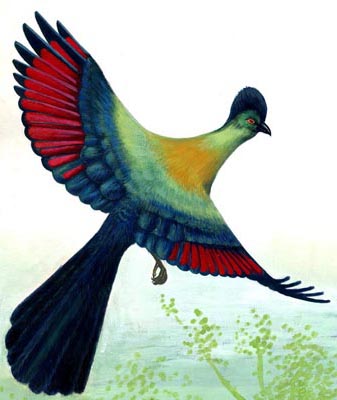The ENTC now has a new website, at www.entc.org.sz
Our logo is adapted from a painting by Phillip Dlamini, 1998, of a purple crested turaco. In traditional Swazi dress, the red feathers feature in the royal headdress, so this bird illustration is not only a symbol for wildlife conservation, but also of cultural heritage.



Malolotja Nature Reserve is one of the most impressive mountain parks in Southern Africa. The spectacular scenery and the variety of fauna and flora makes it a prime highveld conservation area. It is the last unspoilt mountain wilderness left in Swaziland. The reserve extends over an area of 18 000 hectares in north-west Swaziland, making it the largest proclaimed protected area in the Kingdom.
The range in altitude from the top of Ngwenya Mountain, Swaziland's second highest mountain (1829 m), to the deep Nkomati River Valley (640 m) accounts both for the mild temperate climate and great variety of habitats; from short grassland, to thick riverine scrub, bushveld and moist Afro-montane forest.
The Malolotja River rises in the east of the reserve and meanders its way through some fragile highveld bog systems before tumbling over numerous waterfalls, including Swaziland's highest waterfall, the Malolotja Falls, and cutting its way through a steep sided gorge to meet the Nkomati River, some 900 m below.
In the early 1970s the Swaziland National Trust Commission came into being and one of the first projects undertaken by the organisation was to conduct a survey of protection-worthy areas in Swaziland. One of the regions identified as a priority was the region stretching from Ngwenya Mountain in the south to Bulembu Mountain in the north. A proposal to declare the area a nature reserve was referred to the late King, His Majesty King Sobhuza II. The late King appointed Chief Bhekimpi as his eye for the project. More than eighty percent of the area was sheep grazing concession land and much of the southern area was privately owned. Findings ascertained that the area had little agricultural or stock rearing potential and King Sobhuza supported and approved the project. The families living in the area were resettled on good agricultural land adjacent to Malolotja. Over the last twenty years Malolotja has been developed into one of the country's finest reserves of which the country can be justly proud.
Our Contacts:
Head Quarters: (+268) 2416 1489/1179
Email: info@sntc.org.sz
King Sobhuza II Park: (+268) 2416 1489/1179
Email: ksmp@sntc.org.sz
National Museum: (+268) 2416 1489/1179
Email: curator@sntc.org.sz
Copyright © ESWATINI NATIONAL TRUST COMMISSION
Malolotja Nature Reserve: (+268) 2444 3241 / (+268) 2416 1480
Email: culturalvillage@sntc.org.sz
Mantenga Nature Reserve and Swati Cultural Village: 2416 1151/1178
Email: culturalvillage@sntc.org.sz
Mlawula Nature Reserve: (+268) 2383 8885 (Reception)
(+268) 2383 8453 (Senior Warden)
Email: culturalvillage@sntc.org.sz
Magadzavane Lodge: (+268) 2343 5108/9
Email: magadzavane@sntc.org.sz